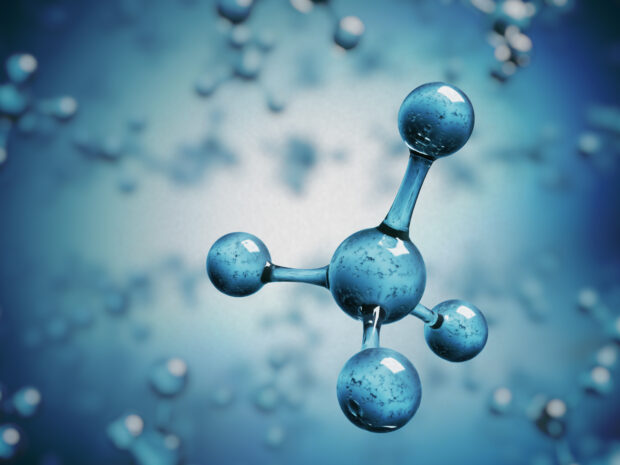MERGE:METHANE
MERGE:METHANE ist a power-to-gas process, that is performed in moonriver.energy plants. The input of the process is green electricity and captured carbondioxide, the output of the process is synthetic methane.
Methanation is the conversion of hydrogen and carbon dioxide to methane and water vapour. Chemical methanation was developed by Paul Sabatier and J.B. Sendersens in 1902 and is an exothermic reaction supported by a catalyst. It takes place at temperatures of 200 to 700 °C at a pressure of up to 80 bar, and has a conversion efficiency of 70-85 % on an industrial scale:
CO2 + 4H2 ↔ CH4 + 2H2O ΔrH298 = -165 kJ/mol
Chemical methanation can be carried out with different reactor types. The reactor type determines the structure and strength of the catalyst. Fixed-bed reactors are predominantly used, but there are also concepts based on fluidised bed, honeycomb and bubble column reactors. Fixed-bed, fluidised-bed and honeycomb reactors have a solid catalyst, while the reactant mixture is gaseous. Bubble column reactors consist of a solid catalyst, which is suspended and fluidised in a mineral oil, and a gaseous reactant mixture.
A further differentiation is made on the basis of the number of phases. In the 2-phase systems (fixed-bed, fluidised-bed and honeycomb reactors), the reactants are gaseous and the catalyst is solid. In the 3-phase system (bubble column reactors), the reactants are gaseous, the heat transfer medium is liquid and the catalyst is solid.
Low operating temperatures are recommended for chemical methanation in order to achieve high carbon conversion rates. Thus, the efficient removal of the reaction heat is an important requirement.
